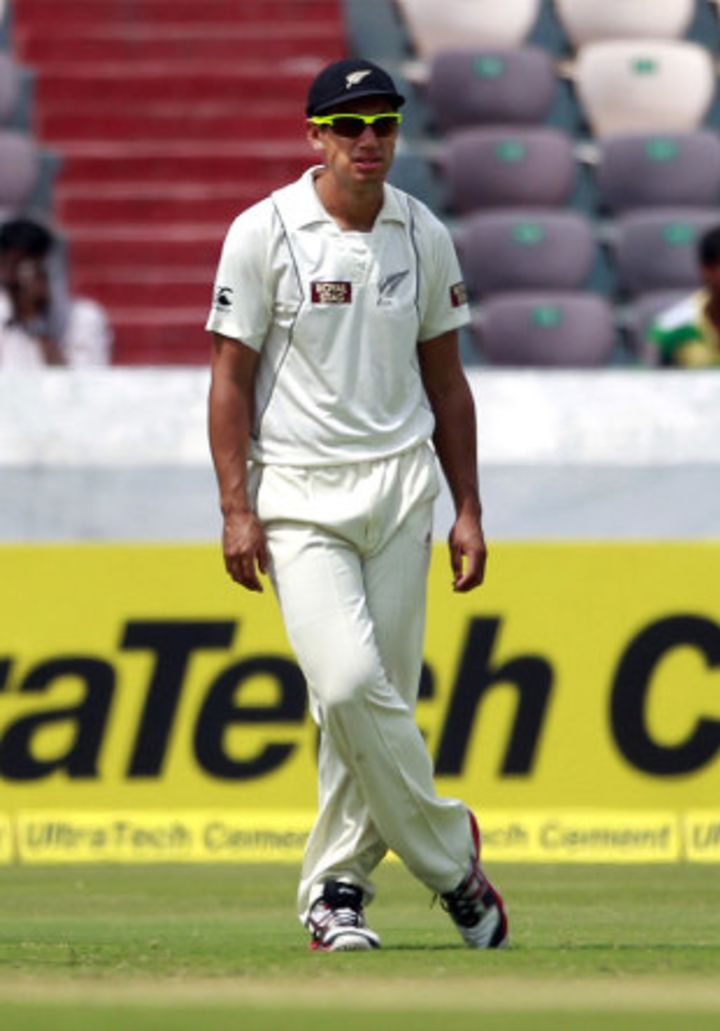The perils of defensive captaincy
New Zealand were in a position to put India under pressure on the first two days but Ross Taylor's captaincy was found wanting at crucial stages

What would be the moments from the ongoing India-New Zealand Test so far that you'd look back on? The poise and persistence with which Cheteshwar Pujara executed his maiden Test century, young Trent Boult's bolt to Tendulkar, or the tact with which R Ashwin and Pragyan Ojha spun a web around the hapless New Zealand batsmen towards the end of the second day. Virat Kohli and MS Dhoni's skilled batting display and Jeetan Patel's four-for may also cross your mind.
But if we observe more closely, we may realise that as much as this game has been about these defining moments, it has been equally, if not more, about the passages of play during which the New Zealand captain Ross Taylor let the Indian batting off the hook. While this doesn't take anything away from India, it gives a useful insight into Taylor and New Zealand's defensive mindset that has allowed the game to drift away from them.
Tests are a wonderful spectacle because they aren't so much about the final result as they are about the process. The team that wins more sessions also grasps fleeting opportunities, stays in the present and goes on to win more matches.
On a typical win-the-toss-and-bat-first-pitch, losing the toss can be very unfortunate. But for an XI that had included four bowlers who bowl seam-up, it could have very well been a blessing in disguise, because the deteriorating pitch can be exploited only if you have the right personnel. The pitch may offer a lot of turn and variable bounce on days four and five, but if you don't have quality spinners to make full use of the favourable conditions, it means precious little.
The pitch in Hyderabad, quite surprisingly, had a bit of moisture on the first morning. Chris Martin and Co responded beautifully to the opportunity by not only getting lateral movement off the surface but also by removing the three most experienced Indian batsmen quickly. When Virat Kohli walked in to join Pujara at 125 for 3, New Zealand had a realistic opportunity to spring a surprise on the hosts. Another wicket at the time could have opened the floodgates, given Suresh Raina's tumultuous run in Test cricket. But instead of inflicting damage with the fast bowlers, Taylor chose to continue with Jeetan Patel from one end till Kohli found his feet.
Instead of dealing with the present and tightening the noose, Taylor chose to give his fast bowlers a breather so they could last if New Zealand had to bowl 150 overs. Instead of finding ways to bowl India out on the first day itself, he was occupied with the thought of keeping his bowlers relatively fresh for day two. Spin from one end was never going to pose tough questions for the young Indian batsmen, and they prospered.
Life rarely gives you a second opportunity to fix your mistakes, but that opportunity means something only if you've learnt your lessons the first time around. When Kohli and Raina fell in quick succession towards the end of the first day, Taylor had the chance to undo the past. MS Dhoni's preference for spinners over seam bowlers is no secret so it was commonsense to bring back Martin or Boult as soon as Raina departed. But Taylor chose a part-time bowler in Kane Williamson to operate from round the stumps with just a slip in place. It allowed Dhoni to ease himself into some batting form.
Instead of dealing with the present and tightening the noose, Taylor chose to give his fast bowlers a breather so they could last if New Zealand had to bowl 150 overs. Instead of finding ways to bowl India out on the first day itself, he was occupied with the thought of keeping his bowlers relatively fresh for day two
The argument in favour of continuing with spin was that the second new ball was around the corner, and more importantly New Zealand were way behind the over-rate. Wouldn't you rather face some penalty than allow the opposition to run away with the game? In any case, over-rate fines are handed out on the basis of a team's over-rate in the entire match and not for one innings alone. Taylor, therefore, could have taken care of that matter in their second innings.
As far as the availability of the second new ball was concerned, well, it can only yield wickets if there's a specific plan to make it happen. Taylor had a deep point and deep square leg for both batsmen even with the new ball during the closing moments of the first day and also on the second morning, which not only allowed easy singles but encouraged the bowlers to pitch shorter. The best way to take wickets with the new ball on subcontinental pitches is to bowl a lot fuller, and if you start setting fields for bad balls, the chances of taking wickets diminish.
There's an old saying in India: "If you have got the wrestler on the mat, make sure that you crush him completely, because if he manages to slip away from your grasp, he will beat you to death." Whenever you are up against a stronger opposition, it's imperative to make every opportunity count and finish them quickly. The longer the battle, the slimmer your chances.
Former India opener Aakash Chopra is the author of Out of the Blue, an account of Rajasthan's 2010-11 Ranji Trophy victory. His website is here and his Twitter feed here
Read in App
Elevate your reading experience on ESPNcricinfo App.